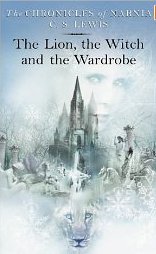Thoughts of snow and books
With the snow falling over London this weekend, I began to think about snow and, of course, its links with the written word. Doing a degree in English Literature taught me that you can take almost any theme, apply it to a few books, and find a wealth of interesting stuff. In literature snow can evoke a festive, cheery feel, or even a magical and enchanted atmosphere. A snowy landscape can be presented as one of nature’s most beautiful aspects, or as a harsh and unforgiving world where one must fight for survival. Snow is a beautiful blanket, but it is also an icy, stifling thing.
Let’s take C.S. Lewis’s The Lion, the Witch and the Wardrobe as one example. One of the first things Lucy becomes aware of when she wanders through the wardrobe and into Narnia is the snow. Lewis’s vision of a land eternally blanketed in white at first seems a gleeful, magical thing. But we soon discover that this constant winter is due to the influence of the White Witch, and so snow becomes something sinister, almost evil. Hope only comes when the snow begins to melt, signalling the wane of the Witch’s power.
Snow in poetry seems to have the same double meaning. Henry Wadsworth Longfellow associates snow with grief; in his poem Snow-Flakes, snow is ‘the secret of despair’ – in snowfall ‘The troubled sky reveals / The grief it feels’. Emily Dickinson, in contrast, evokes a festive, merry picture of snow. Her snowflakes are ‘rebels’, they are ‘jolly’ and urge her to dance (‘And ten of my once stately toes / Are marshalled for a jig!’).
So there we go – a simple scattering of snow in London has me pondering its strange meaning in books. Perhaps the bitter cold can be worthwhile after all.
Do you have any favourite snow-themed books or poems?
Sara Magness, Editorial Administrator



